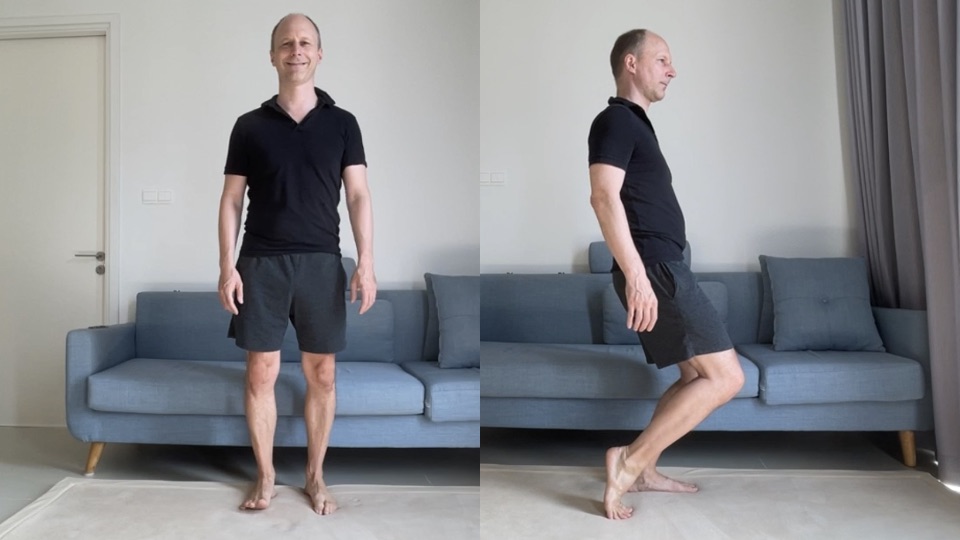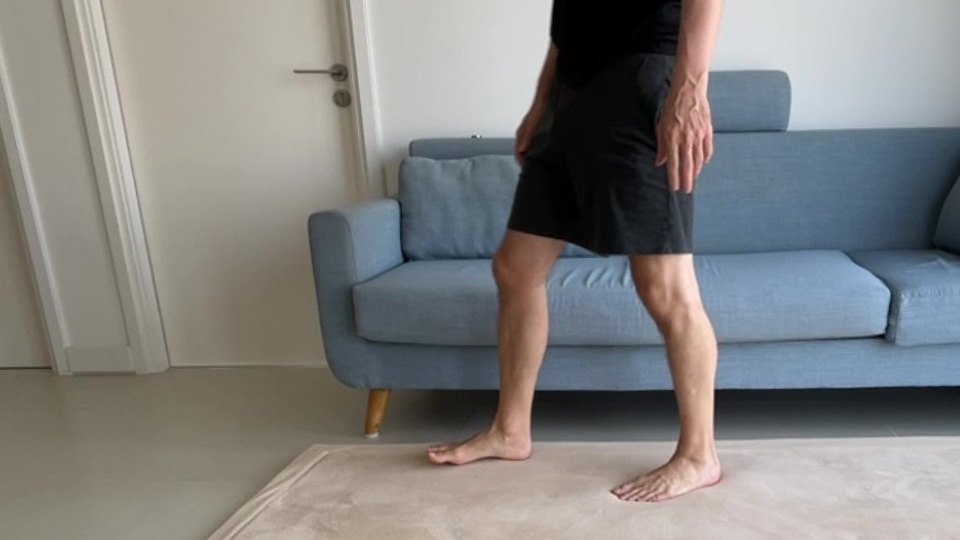Rolling the pelvis with one knee bent
Starting with your feet, you create a push to rock your whole body and see how that push travels upwards and bounces back downwards again. Then you roll your pelvis with both legs extended, or with one leg bent up in front of your chest and one leg extended downwards. The movements are primed by foot, knee and hip extension exercises under load, in order to warm up and protect the knees.
You produce a strong differentiation: one leg is bent and almost completely folded up, while the other leg is long extended, its side long from the toes to the nose, including the hip/psoas area. These extreme opposites are not only very demanding to produce, but also help us to achieve excellence and experience choices and comfort.
scouthip-flexionhip-extensionpushUP10kneelingpigeon-pose rollpelvis_overknee_1
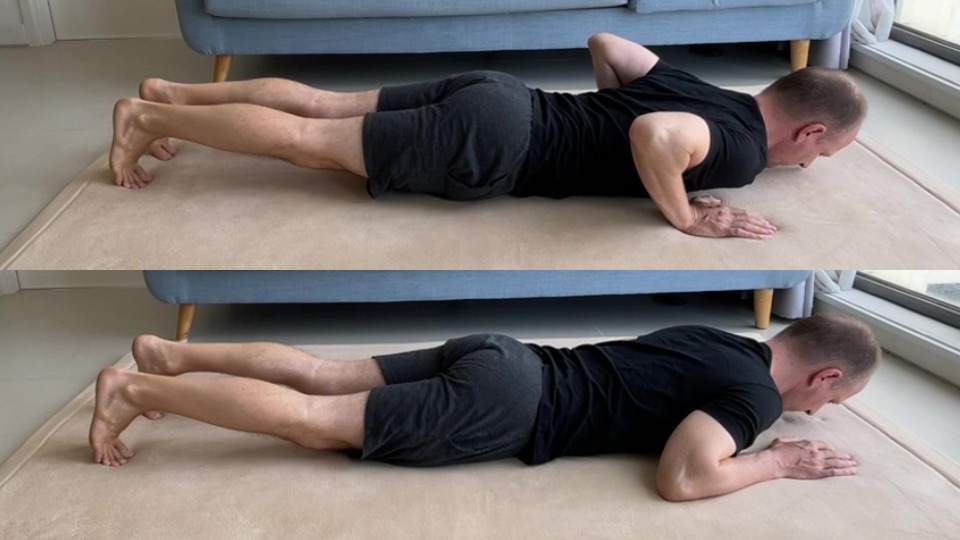
Lie on your belly, in prone position, with your legs extended, your toes standing, your hands standing next to your shoulders.
Rock head with feet
Bend and extend your ankles to create a push up your spine towards your head. Rock your head with your feet.
- Place your arms in a way that supports the movements, either with your elbows on the floor or off the floor, see what works best for you.
You might want to try an asymmetrical push too, for example only bend and extend the right ankle, maybe place the foot a bit out to the right to have a more pronounced push vector, and then let that push go from only one foot up on upwards, wherever it goes.
Rock head with feet
Bend and extend your ankles to create a push up your spine towards your head. Rock your head with your feet.
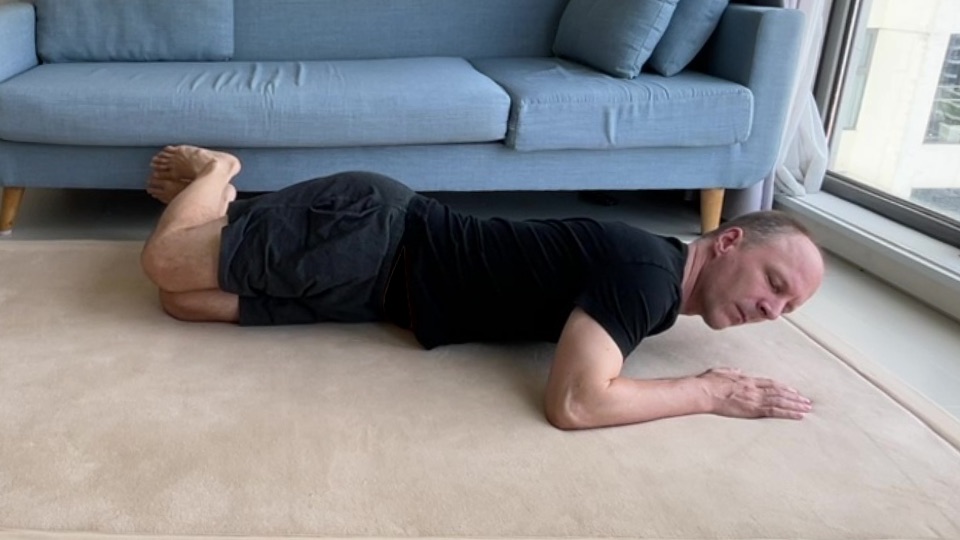
On the belly, hands standing, maybe the elbows on the floor as well, the knees bent
Tilt lower legs
Roll your pelvis a little bit right and left, tilt your lower legs to the sides to support the rolling.
- If you roll your pelvis to the left, and tilt your lower legs to the left, then face to the right to support the motion, or face to the left to create a differentiation.
Tilt lower legs
Roll your pelvis a little bit right and left, tilt your lower legs to the sides to support the rolling.
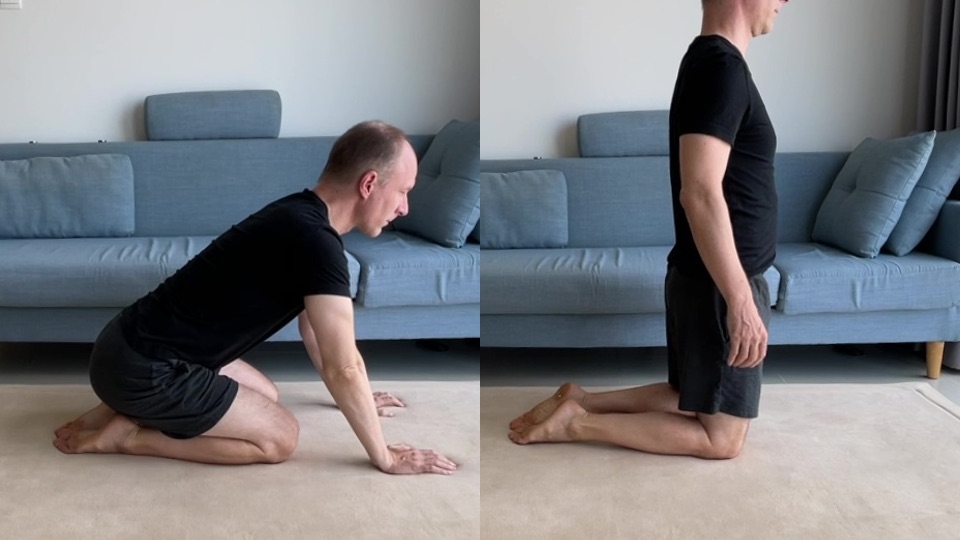
Kneeling upright on both knees
Sit back in kneeling
See how far you can sit back comfortably and then come back up again.
- Do this slowly and many times. Find the best balance and alignment. Go only as far as it's comfortable for the knees.
See if you can come up to kneel straight, upright. Play with kneeling variations and foot/leg positions if that helps to ease into it.
Support yourself with your hands or hands-and-elbows on the floor in front of you.
Sit back in kneeling
See how far you can sit back comfortably and then come back up again.
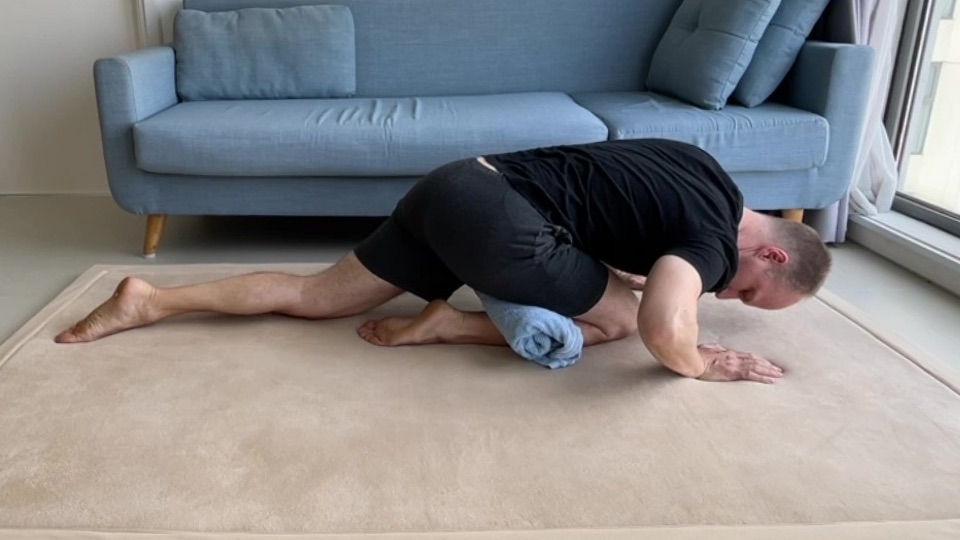
Kneel on both knees and sit back onto your heels as much as possible, support your knees with a rolled up towel or pillow behind your knees if necessary. Place your hands and if possible your elbows on the floor in front of you.
Extend one leg
Shift your weight and extend one leg as far backwards as possible. Stay mobile, move whatever is necessary.
- Allow your pelvis to roll and your arms to bend and extend as much as necessary to make the movement of extending your leg possible.
Extend one leg
Shift your weight and extend one leg as far backwards as possible. Stay mobile, move whatever is necessary.
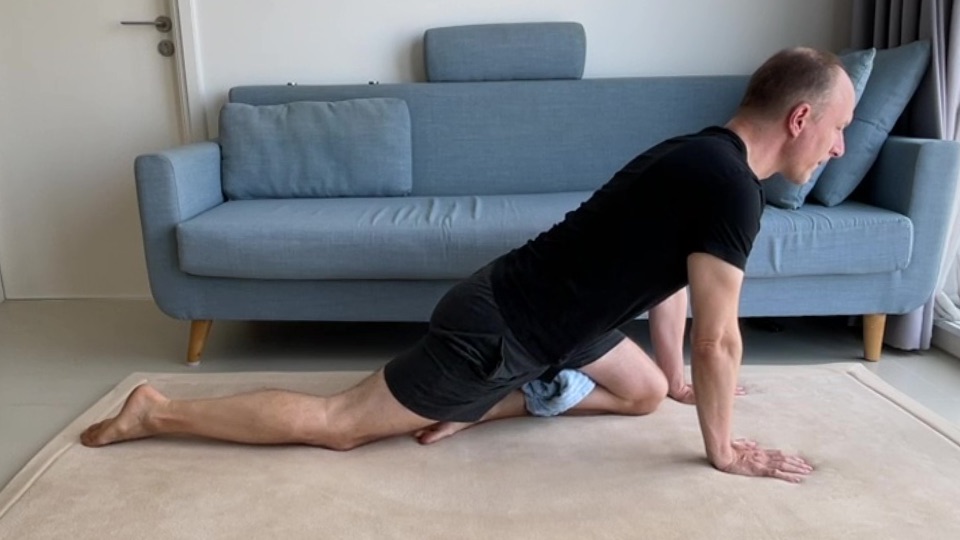
Kneel as before
Extend the other leg
Do the movement only a few times, then take an early break in standing or lying on your back.
- Do not force yourself into that position, but focus on comfortably transitioning in and out of extending your leg backwards.
Extend the other leg
Do the movement only a few times, then take an early break in standing or lying on your back.
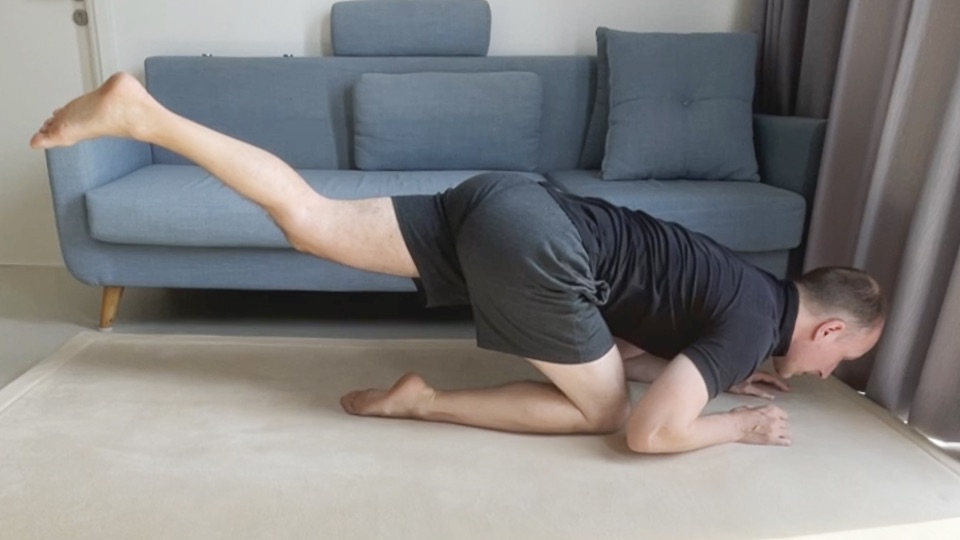
Kneel on both knees, sit back, extend on leg backwards
Lift back leg
Press with your bent leg's foot against the floor to lift your back leg.
- This is an active press up, like before in kneeling on both legs, only now it's a very different starting position.
Shift your weight as necessary.
Lift your foot first, then your knee. Do only a few repeitions then then swith legs or take a break.
Lift back leg
Press with your bent leg's foot against the floor to lift your back leg.
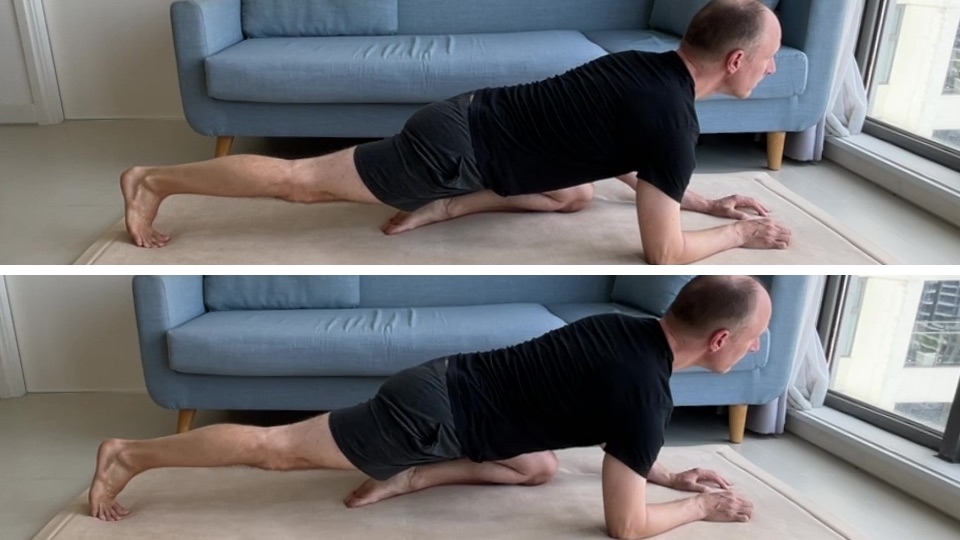
Kneel on both knees, hands and elbows on the floor in front of you, sit back, extend on leg backwards
Push upwards
Create a push with the ankle of your extended leg and see how this push travels upwards to your head.
- Take your time to observe how you create the push and how the push travels up.
Do not overwork your bent leg, take breaks early on, in standing or lying down.
Push upwards
Create a push with the ankle of your extended leg and see how this push travels upwards to your head.
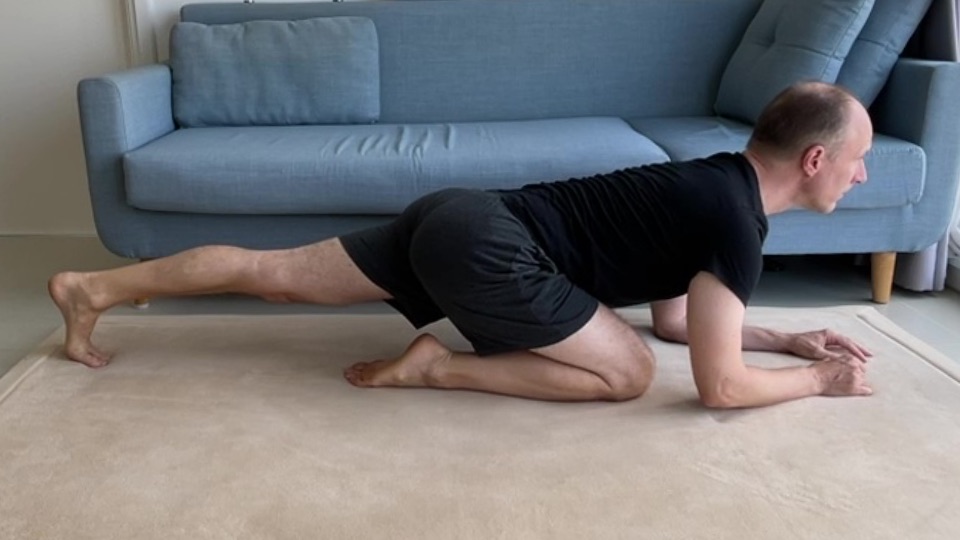
Kneel on both knees, hands and elbows on the floor in front of you, sit back, extend on leg backwards
Push upwards, change legs
Where does the push go? What does it do, what does it do? What does it move, what pieces will it take up?
- And which areas will go untouched, like a cut off branch of a river or a dead architectural space where no wind will ever go in? Is it the push that brings life to our bodies, or is the push proof that we are alive?
Push upwards, change legs
Where does the push go? What does it do, what does it do? What does it move, what pieces will it take up?
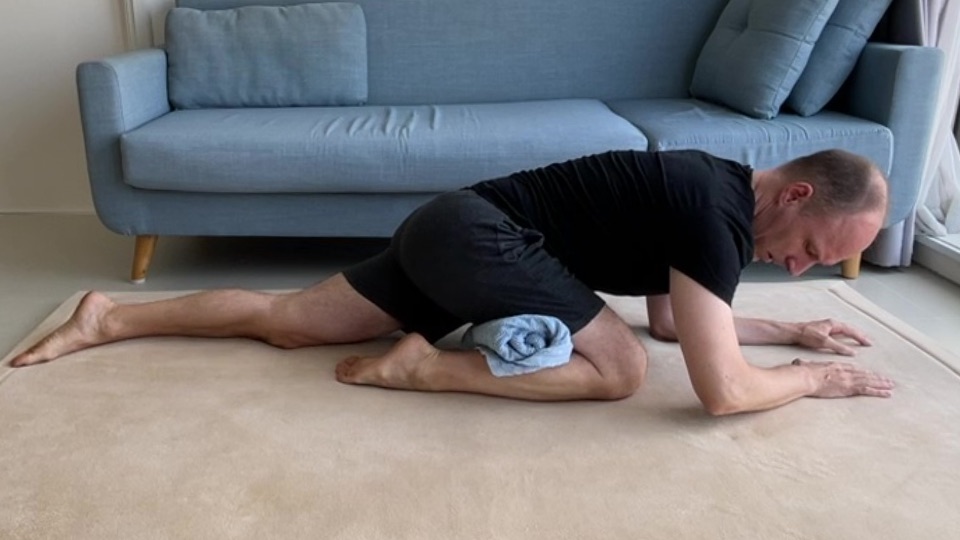
Kneel on both knees, hands and elbows on the floor in front of you, sit back, extend on leg backwards
Roll pelvis
Roll your pelvis right and left, let your extended leg roll with it, allow to accomodate the movements in your chest.
- Observe.
Support your bent leg with a towel or pillow behind the knee if necessary.
Roll pelvis
Roll your pelvis right and left, let your extended leg roll with it, allow to accomodate the movements in your chest.
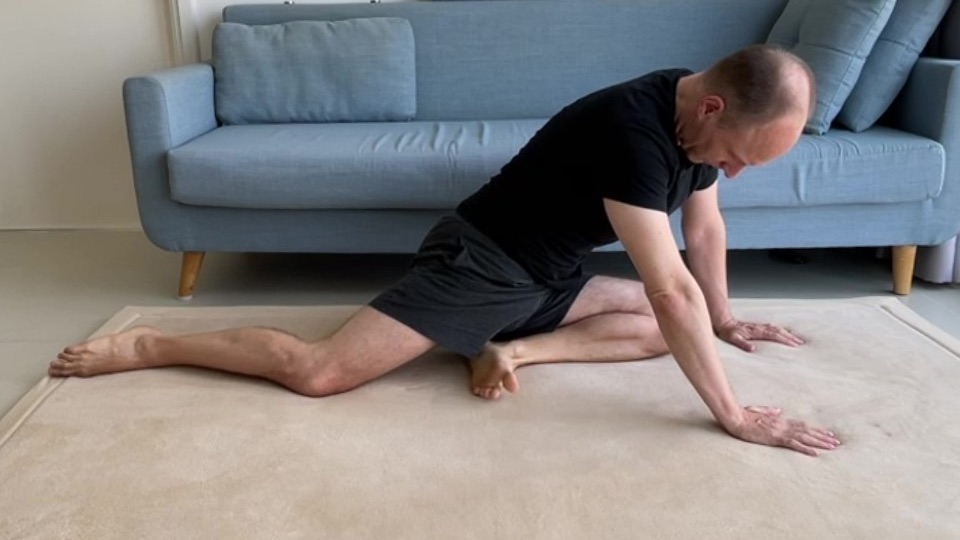
Sit like before, but with the other leg extended
Roll pelvis, switch legs
Remember to also move your feet, and to only do what is comfortable. Don't go too far and take early breaks.
Roll pelvis, switch legs
Remember to also move your feet, and to only do what is comfortable. Don't go too far and take early breaks.
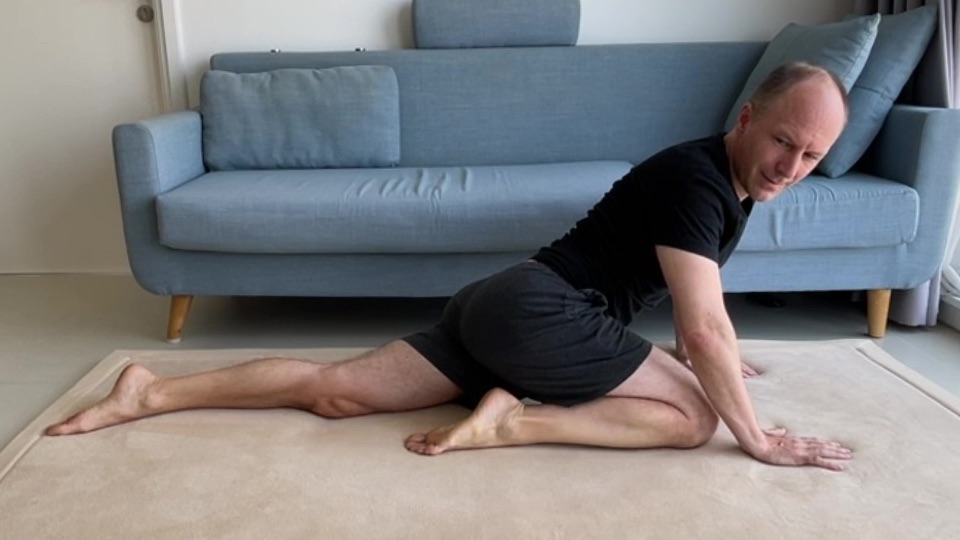
Sit like before
Continuation
Roll pelvis
See how much you need to bend your elbows. Touch them to the floor or have them extended.
- One leg is bent and completely folded up, while the other leg is extended and that side long from toe to the nose, including the hip/psoas area.
Continuation
Roll pelvis
See how much you need to bend your elbows. Touch them to the floor or have them extended.
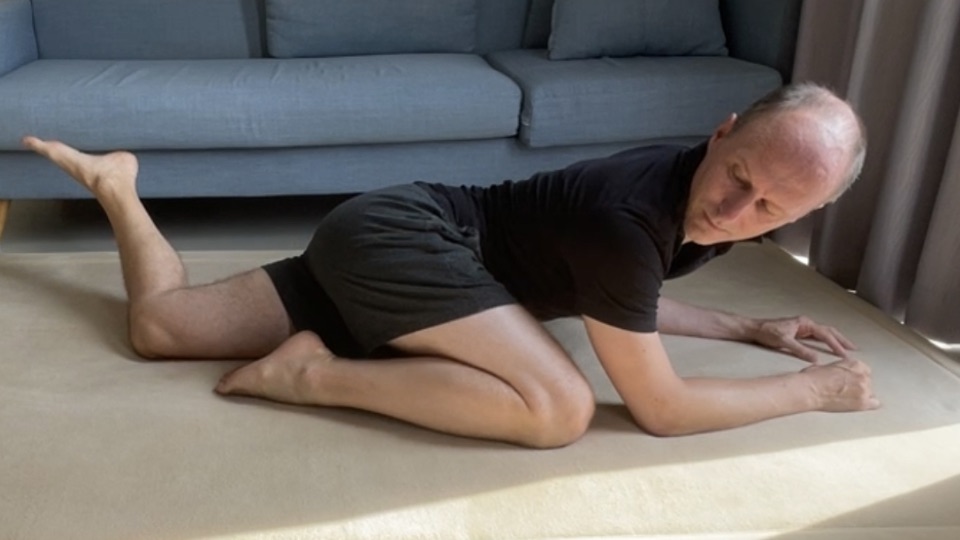
Sit like before, but this time have your knee bent. Don't extend your ankle, but have it bent as well.
Tilt lower leg
Roll your pelvis with tilting your lower leg. Look over your shoulder to follow your foot.
- You might roll as much as to touch your ankle to the floor.
If your right leg is extended backwards and your right knee bent, you roll your pelvis to the right, tilt your lower leg to the right, and look over your left shoulder.
Tilt lower leg
Roll your pelvis with tilting your lower leg. Look over your shoulder to follow your foot.

Kneeling upright on both knees
Reference movement
Sit back in kneeling
See how it is now. Also extend one leg backwards and see how these movements and your way of observing has changed.
Reference movement
Sit back in kneeling
See how it is now. Also extend one leg backwards and see how these movements and your way of observing has changed.

